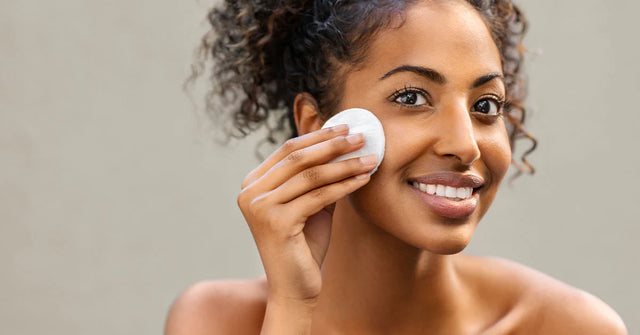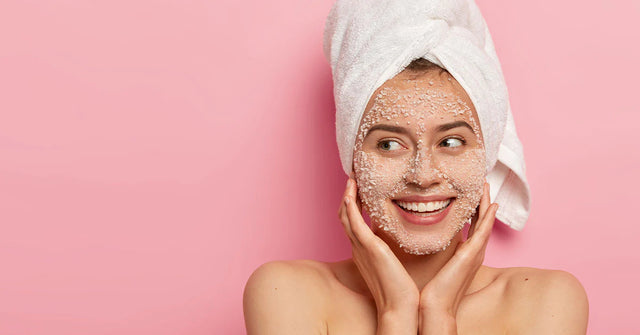No two skincare routines are the same, and this is certainly true when it comes to AM vs. PM skincare routines. While you can have similar steps in your morning and evening routines, there are key differences, and knowing these will ensure the products you use work properly and you reap the full skin-boosting benefits!
Here’s everything you need to know about how the steps between your AM and PM skincare routines differ.
Key Differences Between Each Routine
The main focus of your morning routine should be prevention and protection, whereas the main focus of your evening routine should be treatment and restoration.
While you may use the same cleanser and toner for your day and night routines, the key differences are sunscreen, moisturizer, and serum. Here’s how to incorporate the essentials into each routine for flawless skin!
Morning Skincare Routine Essentials
Hydration, cleansing, and sunscreen are the most important aspects of a successful morning skincare routine, with a focus on antioxidants and sun protection.
Here’s an in-depth look at the essentials you should include in the AM.
Step #1 – Cleanser
Cleansing your skin in the morning gives the complexion instant refreshment and provides a clean canvas for the rest of the day. Using a hydrating or exfoliating cleanser, depending on your skin type, helps prep your skin for the other products in your morning routine. Just remember to wash with lukewarm water to avoid stripping your skin barrier.
Step #2 – Toner
Using a toner is the perfect way to ensure your skin is thoroughly cleansed while providing additional benefits, minimizing pore size, and providing hydration. Some toners also offer antioxidant protection, which helps neutralize harmful free radicals and also works to balance the skin’s pH level. Contrary to popular belief, it’s not only individuals with oily skin that need toners - if you have dry or sensitive skin you can certainly use one, as long as it’s not too astringent.
Step #3 – Serum
The next step after toning your skin is to apply a serum, preferably one that specifically addresses any skin concerns you may have - such as lack of hydration or existing signs of aging. Their lightweight texture allows them to get to work immediately, and serums that contain ingredients such as hyaluronic acid, ferulic acid, and vitamins C and E will keep your skin supple and protected against environmental aggressors all day.
Step #4 – Eye Cream
Since the skin around the eyes is incredibly thin, it’s more prone to damage and showing visible signs of aging than other facial areas. A good eye cream will include a range of ingredients that offer several benefits, protecting and nourishing the skin around the eyes while also reducing crow’s feet, fine lines, and dark undereye circles.
By applying eye cream as part of your AM skincare routine, you’re ensuring that your eyes are protected against environmental aggressors.
Step #5 – Spot Treatment
Not everyone will need to use a targeted spot treatment of course, but if you have a pimple on your face that you want gone ASAP (and who doesn’t?), consider applying a spot treatment before your moisturizer during your morning skincare routine. While many spot treatments are designed for night use, helping to heal the skin and reduce the severity of the blemish overnight, they can be used during the day as long as you allow the formula to dry completely before applying other products over them.
Step #6 – Moisturizer
One of the most important steps, both day and night, is applying moisturizer. A moisturizer keeps the skin barrier intact, protecting against harmful elements while also locking in hydration to reduce dryness.
Use a lightweight moisturizer during the day which absorbs quickly without leaving a greasy residue, layering well under sunscreen and makeup. Look for moisturizers that contain humectants, such as glycerin, which attract moisture from the air, and ingredients that instantly refresh the skin, like caffeine.
Step #7 – Sunscreen
Last, but most certainly not least, is sunscreen. Wearing sunscreen during the day is the most important thing you can do to protect your skin against the adverse effects of the sun, and if you opt for a product that offers both UV protection and hydration, you get twice the benefits. While SPF levels differ depending on the product you choose, most individuals will find that a treatment with SPF 30 will be suitable for their skin. And don’t forget, the sun can still do damage on overcast days, so never skip this important step!
Nighttime Skincare Routine Essentials
Your nighttime skincare routine should focus on deep cleansing, healing, and hydration. Here are the essentials to include in your nighttime skincare routine.
Step #1 – Makeup Removal
One of the key differences between your morning and evening routine is makeup removal. While regular cleansers are designed to wash away the day’s dirt, you may need an oil-based product to break down stubborn makeup and ensure that there are no traces left on your skin overnight. This not only helps reduce the risk of breakouts but also helps the other products in your routine penetrate the skin optimally.
Step #2 – Cleanser
After removing makeup, it’s time to cleanse! Cleansing in the evening is important to remove all the oil, bacteria, and dirt that has built up during the day, and, as with the AM skincare routine, a hydrating cleanser or exfoliating cleanser will work, depending on your skin type.
Step #3 – Toner
Much like toner preps your skin for the other products in your daytime routine, it serves the same purpose in your nighttime routine, deeply cleansing to remove any excess oil, dirt, and dead skin cells. When using a toner at night, don’t forget the areas around your hairline and jawline to make sure all parts of your skin are thoroughly clean.
Step #4 – Serum
Nighttime is the perfect opportunity to use a serum that repairs skin damage and targets signs of aging. Formulas containing peptides and innovative ingredients such as growth factors will work to reduce the severity of existing damage like fine lines and wrinkles while improving the health of the skin cells to slow the development of common signs of aging.
Step #5 – Eye Cream
Eye cream is a must for your PM skincare routine to ensure that this delicate, easily-damaged and often drier area of the skin receives as much hydration and nourishment as possible. Regular use of an eye cream is the best way to reduce the appearance of issues that may already affect the skin around your eyes, including puffiness and fine undereye lines, or prevent their development.
Step #6 – Spot Treatment
A spot treatment can be used during the day or at night, but applying one at night allows it to work without interference from the sun or environmental aggressors. Look for a formula that contains colloidal sulfur, which clarifies the skin and keeps it free from pore-clogging skin cells, plus zinc oxide, an effective skincare ingredient that accelerates the healing of blemishes.
Step #7 – Moisturizer
The moisturizer you use at night can be richer and heavier than your daytime product and should contain ingredients designed to repair and restore the skin. Using a cream that contains retinol at night is ideal, as while it is one of the best ingredients for treating a multitude of skin concerns, in particular signs of aging, it can increase photosensitivity if used during the day.
Step #8 – Overnight Mask
Applying an overnight mask is an extra step that delivers huge skincare benefits! Overnight masks can help target specific skincare concerns but are particularly beneficial for locking in moisture and helping other products perform optimally. With formulas that penetrate deeply while you sleep and ingredients that work to reduce discoloration and reduce inflammation, you’ll wake up with a bright, beautifully revitalized complexion.
FAQ: AM vs. PM Skincare Routine
Question One: What should be your AM and PM skincare routine?
Both routines should include cleansers, toners, serums, eye creams, and moisturizers, with the addition of sunscreen in your AM skin routine and an overnight mask in your PM skin routine, plus a spot treatment in either if required.
Question Two: Can morning and night skincare routines be the same?
They can be similar but not completely the same. As mentioned, sunscreen use during the day is a necessity and nighttime is the perfect opportunity to get all the benefits of retinol, an ingredient not suitable for the daytime.
Bottom Line
The difference between PM and AM skincare routine might be minimal, with the morning routine focusing on protection and the evening routine on treatment, but it is important if you want to get the most benefits from the products you use.
Always remember, skincare is self-care, and taking the time to establish effective morning and evening skincare routines using our dermatologist-developed, clinically proven treatments is the best way to improve multiple aspects of your skin, regardless of your age and skin type.
Mentioned in this article
More stories

AM Skincare Routine: Ultimate Guide




